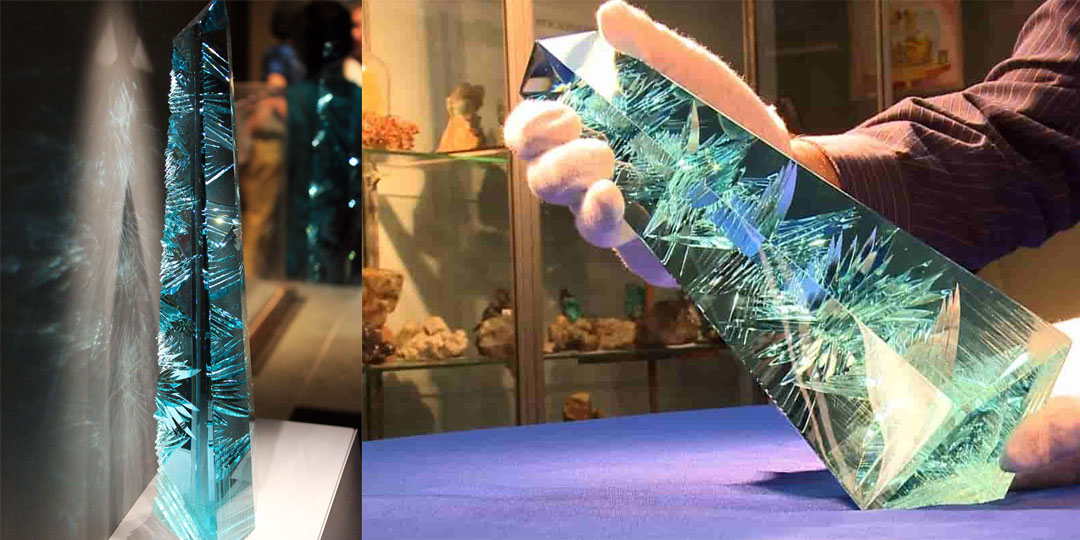Excited to talk about the birthstone for March AQUAMARINE, a gemstone that is a symbol of grace and elegance, having a strong ability to not only protect and purify our energy but also helps in emotional healing. For centuries, this timeless gemstone has been a symbol of youth, hope, health, and fidelity.
To begin with, what is Aquamarine?
Aquamarine means “Water Of The Sea,” a name which originated in the early 1700s, around the start of the Georgian era. These gorgeous gems are part of the beryl family of minerals, which also includes emeralds.
The name is derived from two Latin words, Aqua meaning water, and Marina meaning Sea. In ancient times, Romans and Greeks thought the gemstone was favoured by their respective Gods of the Sea, Neptune and Poseidon. When encountered with any peril at Sea, sailors would simply toss their aquamarine amulets into the Sea to appease the Gods and ask for safe passage.

Featured above is Aquamarine and diamond jewels, gifted to Queen Elizabeth II in 1953 when the president and people of Brazil coronated her.
The Queen was so enamoured of the gifts that the parure soon grew to include a bracelet, brooch, and tiara. Today, the Queen’s aquamarine jewellery is the world’s most famous ensemble featuring March’s official birthstone.
Now, that we have learned what is Aquamarine, let’s take it further and understand where they are found?
The name Aquamarine is derived from two Latin words, Aqua meaning water, and Marina meaning Sea, indicating that the gemstones are widely available in Latin America. Most of the raw crystals for the world market come from the mines of Brazil. The rare, intense blue aquamarines from the Santa Maria de Itabira mine in Brazil, are called ‘Santa Maria.’
Aquamarine is also mined in several countries such as Australia, China, Kenya, Madagascar, Mozambique, Nigeria, Pakistan, the United States, and Zambia.

Featured above are Aquamarine mined Zimbaqua Gems, which Africa’s FIRST all-women mine.
What determines the quality and value of Aquamarine?
Color, clarity, Cut, and Carat determine the quality and value of the gem. However, the major factor that is kept in mind is the intensity of its COLOR and the amount of clarity it has.
The colour tones of aquamarine are subtle and varied, most often exhibiting a beautiful ocean blue colour, with subtle hints of green. The more intense the colour of an aquamarine, the more value is put on it. It is a pure, clear blue that continues to epitomize the Aquamarine because it brings out the immaculate transparency and magnificent shine of the gemstone. The quality of the cut is also considered when determining the overall potential of the Aquamarine.

Featured above is Dom Pedro Aquamarine a 10,363 cts, the largest faceted Aquamarine in the world. It was cut from a crystal originally weighing approximately 100 pounds (45 kg) and measuring more than 3 feet, by gem artist Bernd Munsteiner, and named it after the first two emperors of Brazil.

A pattern of tapering “Negative Cuts “is faceted into the two reverse faces of the obelisk. In certain lighting conditions, the gem gives the illusion of being illuminated from within. The vertical “lines” near the base are hollow tubes that formed naturally in the original crystal. Dom Pedro was unveiled at the annual gem fair in Basel, Switzerland, in 1993.
In December of 2012, the Dom Pedro was donated to the Smithsonian’s National Gem and Mineral Collection and is now a top attraction at the Janet Annenberg Hooker Hall of Geology.
Aquamarine is one of the favourite gemstones amongst the modern designers for the following reasons.
-The colour of the gemstone complements almost every skin.
-The subtle cool blue colour suggests class and sophistication, making it ideal for any eye colour and outfits.
-The light colour of Aquamarine leaves the designer free to bring out the brilliance with fine grooves, notches, curves and edges. In this way, each Aquamarine becomes a unique specimen.
-They are a cutter’s dream gemstone, carving cleanly with little or no risk of cleaving or breaking. They are used by cutters to experiment with new contours and designs. The lucid colour, makes it easy to see inclusions enabling the cutter to bring out the charming effect of the gem.

Featured above is an Antique Aquamarine Diamond and Ruby Cameo Brooch, the oval-shaped aquamarine cameo, depicting the classical bust of a female bacchante mounted within an old-cut diamond frame, circa 1870. The intricate and beautiful carving of Aqauamrine is spectacular.
Tips to keep in mind while purchasing Aquamarine!
-Check the colour, aquamarine range from light sky blue to deep ocean blue, any other colour should be taken as a warning.
-Aquamarine is a very hard stone; they will not be able to be scratched by a fingernail or even a penknife, surface scratches could mean the gemstone is made of glass or a lesser quality stone.
-They are usually eye-clean; there should not be any visible blemishes, bubbles or material within the stone.
-Touch the gemstone to your forehead, if it feels room temperature it is likely to be glass, Aquamarine will feel pleasantly cool.
-Look at the gem from different angles; it should change colour from blue to near colourless due to the pleochroic nature of the gemstone.
-The deep blue Aquamarine is the most valued, though heat treatment can be applied to enhance the colour, making the stone more attractive, make sure you are aware of any treatments your stone has, as natural coloured stones are more valuable.
I am sure we are all ready to purchase our new Aquamarine now! Take a hint from this guide and identify it.

Featured above is the iconic Aquamarine and Ruby Belt Buckle necklace designed in 1935 by Fulco di Verdura for Paul Flato. The necklace was originally commissioned by Cole Porter for his wife Linda Lee Porter and now, actress Jennifer Tilly owns the necklace, sold to her by Lee Siegelson.
Key points for Maintenance of Aquamarine.
-Avoid wearing them when working around harsh chemicals.
-Keep them away from any source of strong heat and direct sunlight, as this can be very detrimental to colouring, And the gemstone can fade if exposed for too long.
-To clean your Aquamarine, simply use soapy water and a soft cloth. Be sure to rinse well to remove soapy residue. As with most gemstones, ultrasonic cleaners and steamers are not recommended.
-Store aquamarine away from other gemstones to avoid scratches. It is best to wrap gemstones in a soft cloth or place them inside a fabric-lined jewellery box.

Featured above is Paul Flato Brooch, set with a rectangular-cut aquamarine, enhanced by an old, circular and baguette-cut diamond overlapping spray, mounted in platinum, circa 1940.
So guys, with this I conclude my series on Aquamarine, hope you all enjoyed reading it, as much as I did curate it for you.
Content Credit Gem Select, Brilliant Earth, Wikipedia, Pinterest (In case, I have missed out on mentioning your name in credits, please let me know, will do the needful immediately)

Good evening sir , Aquamarine gems are really fascinating beautiful excellent gemstones . mostly mined from pegmatite pipe rock intruded through schist rocks , gneiss rocks ,, granite rocks etc , associated with garnet , chrysoberyl,smoky quartz felspar, tourmaline etc ,I conducted geological survey in Kanyakumari district Tamilnadu state India, in the year 1978 to 1982 . Very interesting work 👌👍👌 super Thanks .
This article is really a fastidious one it helps new net people, who
are wishing for blogging.
Thank you, Maik!